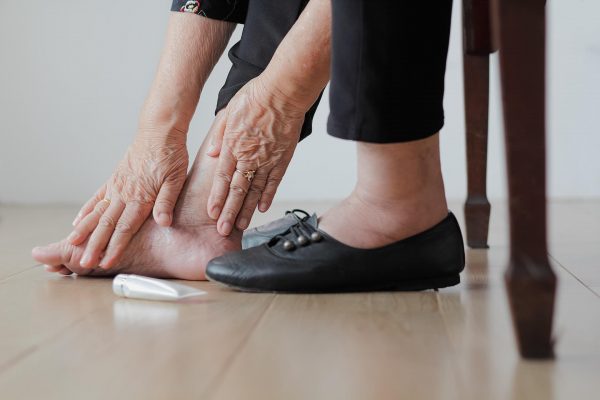While there are many foot problems related to diabetes, today we’ll tackle a tough one: diabetic foot ulcers. In short, these are open wounds that form on the bottom of the feet and occur in roughly 15% of patients with diabetes.
Although diabetic foot ulcers can be painful and require immediate attention from your podiatrist, diabetes can cause people to lose feeling in their feet, meaning that an ulcer can go undetected and untreated.
We’re here to help you take care of this issue in any way we can, starting with the full details on everything you need to know about foot ulcers from diabetes.
What Causes Diabetic Foot Ulcers?
Although there are three types of ulcers in the feet, neurotropic (or “diabetic foot” ulcers) are more likely to occur in patients with diabetes because nerve damage (called neuropathy) often affects those with elevated blood glucose levels.

When ill-fitting shoes or walking barefoot causes rubbing to produce a wound, the patient is unable to sense the pain from the injury, enabling the wound to worsen over time. Additionally, those with diabetes cannot fight off infection as easily, which makes recovering from a foot ulcer a serious concern.
What Can Happen if a Diabetic Foot Ulcer Goes Untreated?
If left untreated, the infection could be so severe that foot amputation may be unavoidable. In fact, APMA estimates 14 to 24 percent of patients who have a diabetic foot ulcer will require amputation. You can even lose your life due to the spread of the infection if it goes unnoticed long enough.
Please be extra careful and contact a podiatrist immediately should you be diabetic and suspect that you may have a foot ulcer. Additionally, the following steps can help reduce your risk of serious infections in your feet:
How To Reduce the Risk of Diabetic Foot Ulcers
Steps to reduce the risk of diabetic ulcers in your feet include:
- Check and clean your feet daily. This includes your toes, the bottoms, and the sides of your feet. If you are unable to reach the bottoms of your feet, please ask for assistance to make sure any issues are caught early.
- Wear comfortable shoes that do not rub against your feet. Make sure you can wiggle your toes in your footwear, and always wear comfortable, breathable socks. If you have sensitive feet, you may need special footwear.
- Do not use heating pads, electric blankets, or hot water bottles. Sensitive feet can burn more easily, which can lead to serious infection.
- Never go barefoot. Even when showering, you should wear a shower sandal or shoe to protect your feet.
- Stick to a well-balanced diet. Having enough vitamins and minerals in your diet can help with tissue growth and healing.
- Consistently visit your podiatrist. Your foot doctor will examine your feet for any issues and help you stay on top of proper foot and ankle care.
Following these steps, as well as the other steps of preventive care for patients with diabetes, can help you land on your feet.
Diabetic Foot Ulcers and Healing
Although some diabetic foot ulcers can heal in a matter of weeks under the right conditions, some could take months to see improvement or may continue to worsen. This infection is serious in patients with diabetes, so we urge you to seek immediate care if you believe you may have a foot ulcer.
Our team understands the importance of getting you the right care when you need it and do our best to get patients in for same-day appointments for emergencies. If you think you have a diabetic foot ulcer or any other foot problems, we’re here to help.
Categorized in: Blog
Comments are closed